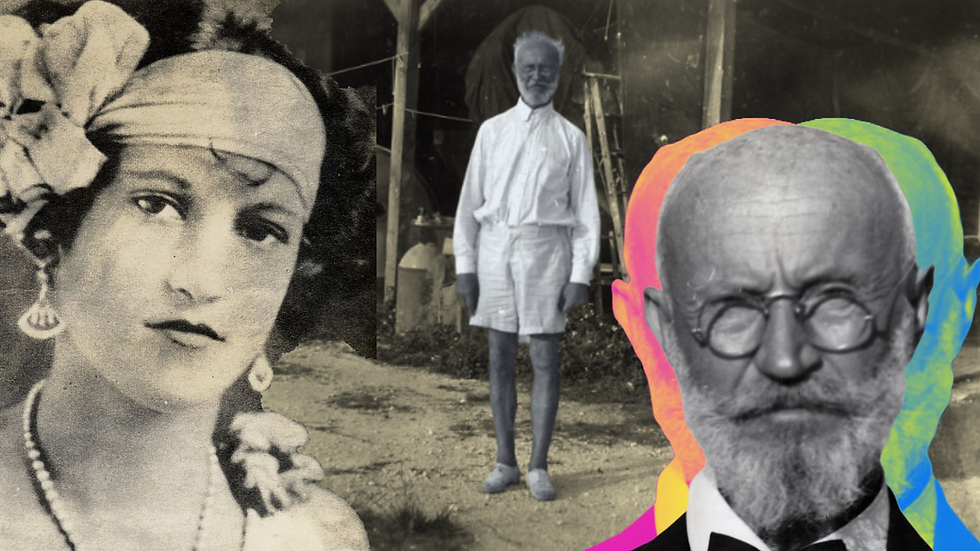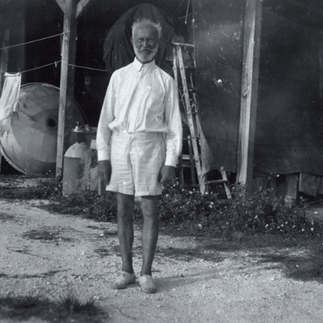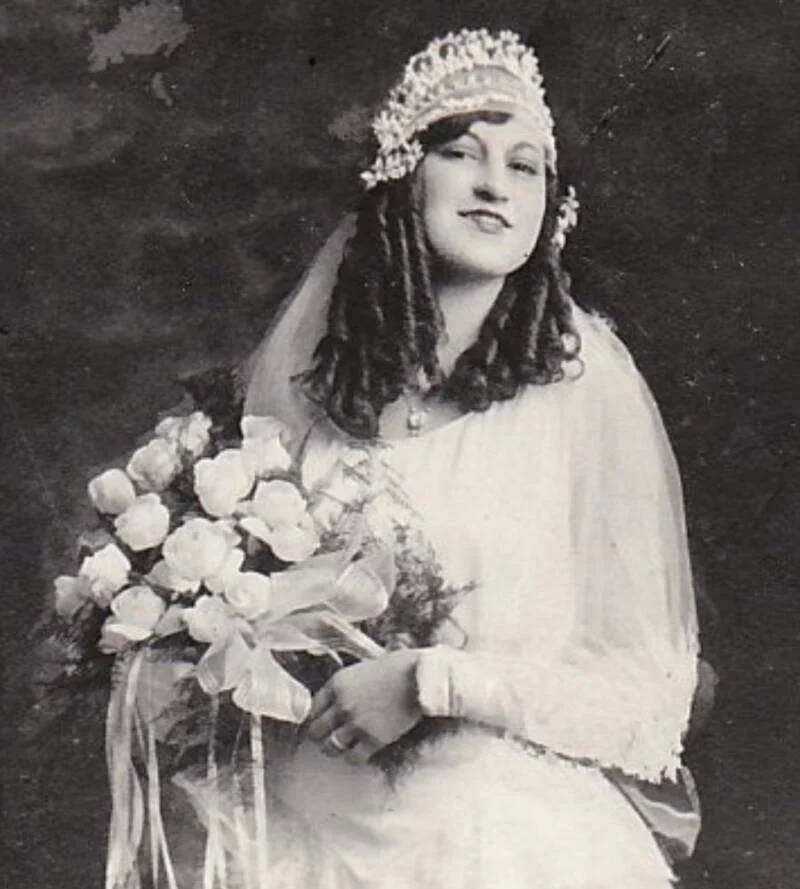The Tragic and Disturbing Story of Carl Tanzler and Elena de Hoyos
- dthholland
- Oct 24, 2024
- 5 min read

Carl Tanzler, often remembered for his eerie obsession with Maria Elena Milagro de Hoyos, was a figure as strange as he was tragic. His peculiar story has become a tale of macabre fascination, blending fantasy, science, love, and death in a way that almost defies belief. Born on 8 February 1877 in Dresden, Germany, Carl Tanzler (also known as Count Carl von Cosel) eventually moved to Key West, Florida, where his bizarre and infamous chapter with Elena began.
The Early Life and Fantasies of Carl Tanzler
Tanzler’s life, even before meeting Elena, was imbued with fantastical notions and peculiar obsessions. Growing up in Germany, Tanzler claimed that his life was shaped by visions of a deceased ancestor, Countess Anna Constantia von Cosel. This spectral figure, according to Tanzler, revealed to him the face of his one true love—a dark-haired beauty with exotic features. This vision haunted him throughout his life, and he believed that fate would eventually lead him to the woman in his visions.
Though much of Tanzler’s life before arriving in the United States remains somewhat clouded by his own fabrications, he purportedly held numerous degrees in diverse disciplines, many of which were likely fabricated or exaggerated. This did not prevent him from being employed as a radiologic technologist at the Marine Hospital in Key West, Florida, where he would encounter Elena. His charm, medical jargon, and grandiose claims about his expertise inspired confidence in his abilities to cure even the most hopeless of patients. Yet, it was not just medical treatment he had to offer—he was also a man lost in an obsessive quest to find his otherworldly true love.
Meeting Elena de Hoyos
On 22 April 1930, Tanzler's world changed forever when he met Maria Elena Milagro de Hoyos. Elena, a Cuban-American beauty, was brought to the hospital by her mother for treatment. She had been diagnosed with tuberculosis, a disease that would claim many of her family members and, eventually, her own life. For Tanzler, the moment he laid eyes on Elena, he recognised her as the woman from his visions—the exotic dark-haired beauty he had been destined to love. Despite the reality that Elena was already married to Luis Mesa and showed no signs of romantic interest in him, Tanzler's obsession with her only deepened.
Elena was the daughter of Francisco “Pancho” Hoyos and Aurora Milagro, a local Key West family. Her father worked as a cigar maker, while her mother cared for the family. Elena’s sister, Florinda “Nana” Hoyos, played a significant role in the events that would unfold after her death. Like many in her family, Elena was gravely ill with tuberculosis, which Tanzler, with his self-professed medical expertise, attempted to cure through a variety of unconventional methods.
Obsession and Loss
Tanzler devoted himself to Elena's treatment, even bringing X-ray and medical equipment to her family’s home. He attempted to cure her using bizarre, self-concocted remedies and devices, none of which had any real chance of success. Alongside his futile medical efforts, Tanzler showered Elena with gifts of jewellery, clothes, and other tokens of affection. He repeatedly professed his love for her, though by all accounts, Elena did not reciprocate his feelings.

Despite his obsessive efforts, Elena succumbed to tuberculosis on 25 October 1931, at the age of 22. Devastated by her death, Tanzler was not ready to let go. He paid for her funeral and convinced her family to let him build an ornate above-ground mausoleum for her in the Key West Cemetery. Unbeknownst to her family, Tanzler had a key to this mausoleum and visited it almost every night.
A Sinister Act of Love
In April 1933, Tanzler made a fateful and disturbing decision. He claimed that Elena’s spirit visited him regularly at her grave and urged him to take her from the mausoleum. On a dark night, he removed Elena’s body, transporting it to his home on a toy wagon. There, he began the grotesque process of preserving her body, determined to bring her back to life in some form.

As her corpse decomposed, Tanzler went to extreme lengths to preserve Elena’s appearance. He tied her bones together with piano wire, replaced her skin with a mixture of silk cloth, wax, and plaster of Paris, and used glass eyes to give her a semblance of life. As her hair fell out, Tanzler fashioned a wig from hair that he had earlier collected from Elena’s mother. He stuffed her chest and abdominal cavity with rags to maintain her shape and dressed her in fine clothing, jewellery, and gloves. For seven years, Tanzler kept Elena’s body in his bed, masking the odour of decomposition with disinfectants and perfumes.
What perhaps elevates this already disturbing tale to new levels of horror is the fact Tanzler had inserted a paper tube into Elena’s pelvic area, allegedly to facilitate intercourse. Although this necrophilic detail did not surface until decades later, it casts a dark shadow over the romanticised portrayal that some of the public held of Tanzler at the time.
Discovery and Public Sensation
In 1940, after hearing rumours about Tanzler’s strange behaviour, Florinda Hoyos grew suspicious. Tanzler’s once-regular visits to the mausoleum had ceased, and Florinda decided to investigate. Upon entering Tanzler’s house, she was horrified to discover her sister’s body, dressed in a wedding gown and lying in Tanzler’s bed. What at first appeared to be a mannequin was, in fact, the preserved remains of Elena. (He had previously been seen by his neighbours, dancing at night with her corpse in front of an open window)

Authorities were alerted, and Tanzler was arrested. His crime? “Wantonly and maliciously destroying a grave and removing a body without authorization.” However, Tanzler was never tried for his gruesome acts. The statute of limitations had expired, and remarkably, the public response was not one of outrage but of fascination. Tanzler’s actions were framed by some as the ultimate expression of romantic love. Nearly 7,000 people visited Elena’s body when it was put on display at a local funeral home following its recovery.
Tanzler’s Eccentric Vision and Controversial Legacy
Tanzler’s macabre obsession did not stop after his release. He continued to claim that he had acted out of love and that he had plans to fly Elena’s body into the stratosphere on an airship, where radiation would bring her back to life. Even after being sent to live near his ex-wife, Tanzler remained unrepentant, still lost in his fantastical dream of resurrecting Elena.

Elena’s remains were reburied in a secret, unmarked grave to prevent further tampering. Yet, Tanzler’s obsession endured. He created a life-sized effigy of Elena, using her death mask as a model, and lived with this effigy until his death in 1952.
Tanzler was apparently found in the arms of Elena's effigy upon discovery of his corpse, three weeks after his death. Still, his obituary reported that he died on the floor behind one of his organs. The obituary recounted: "a metal cylinder on a shelf above a table in it wrapped in silken cloth and a robe was a waxen image".
It has been written (most notably by Tom Swicegood in his book, Von Cosel) that Tanzler had the bodies switched (or that Elena's remains were secretly returned to him) and that he died with the real body of Elena
Necrophilia Allegations and Modern Reflections
In the 1970s, decades after the original events, two physicians who had attended the 1940 autopsy of Elena’s body revealed that a vaginal tube had been inserted into her corpse, providing evidence of Tanzler’s necrophilia. This revelation shocked those who had once viewed Tanzler as a tragic, if eccentric, romantic. Although this detail had not been presented at the time of Tanzler’s arrest, its later disclosure added a further layer of horror to an already grim tale.
Tanzler’s story has been recounted in various pulp magazines, books, and media, each iteration adding new details and interpretations. One particularly chilling claim came in 1982, when an article suggested that Tanzler had left a note confessing to having poisoned Elena. While the veracity of this claim remains uncertain, it adds yet another macabre twist to the tale.

























































